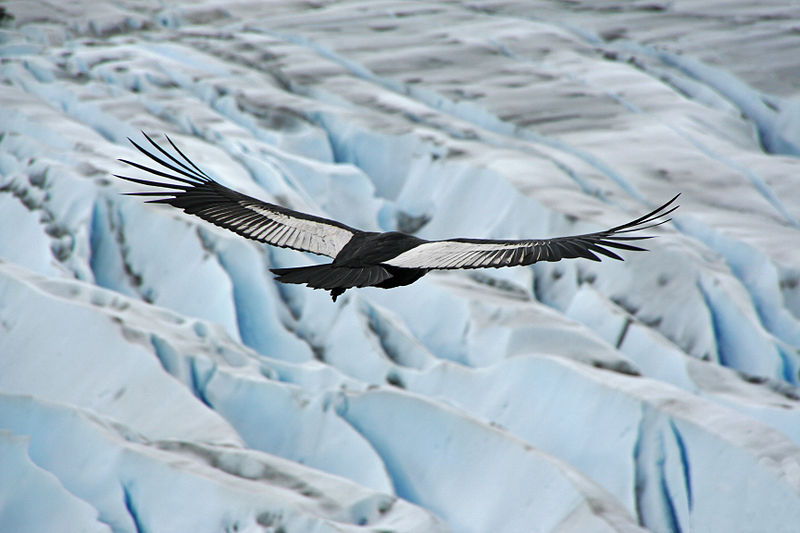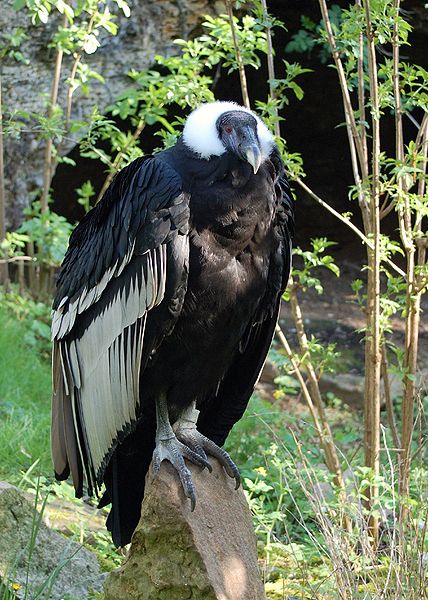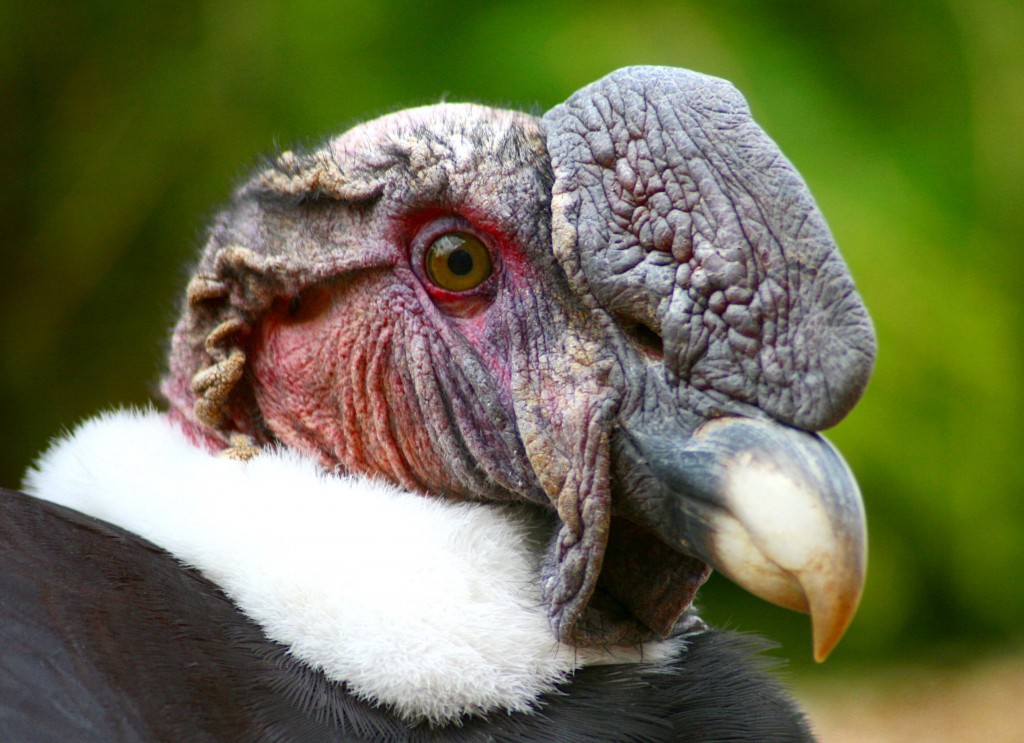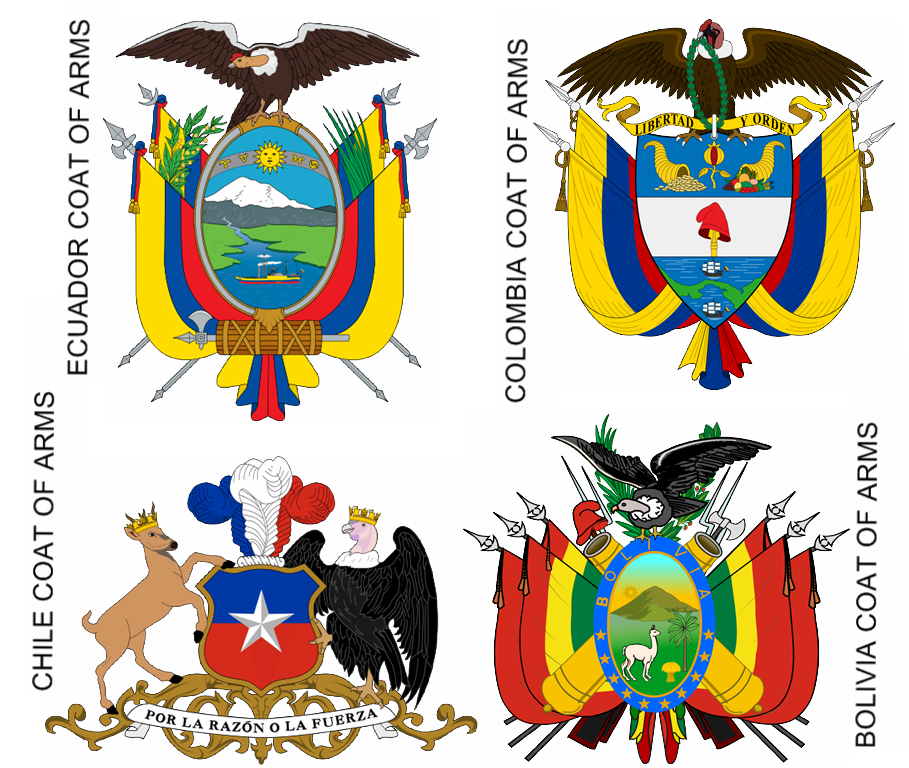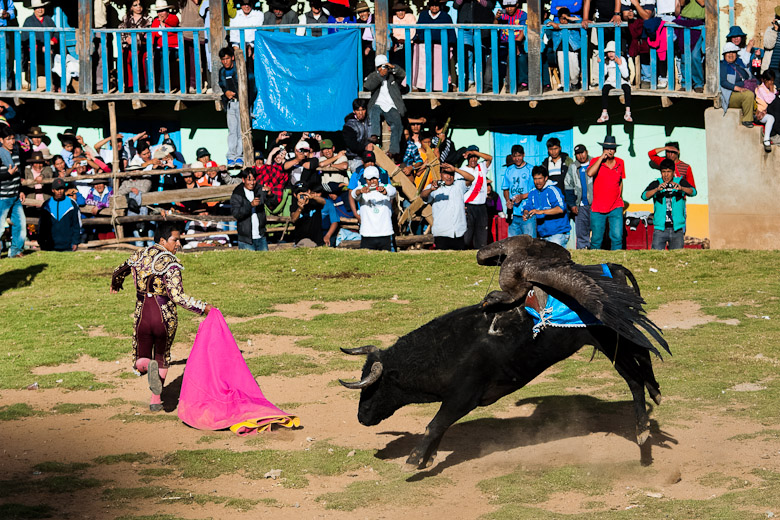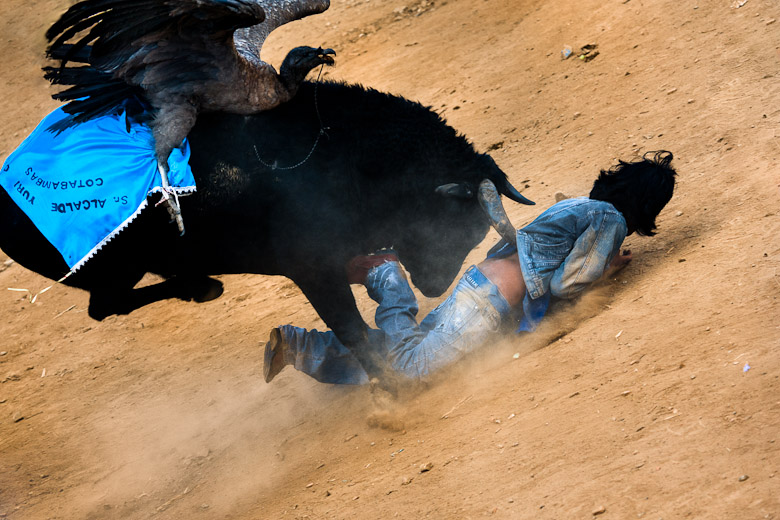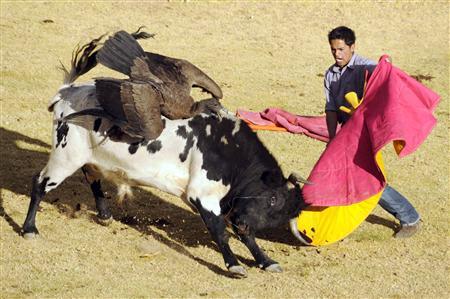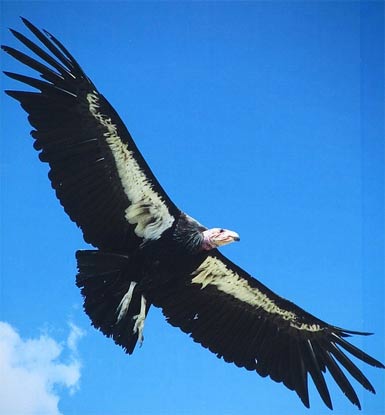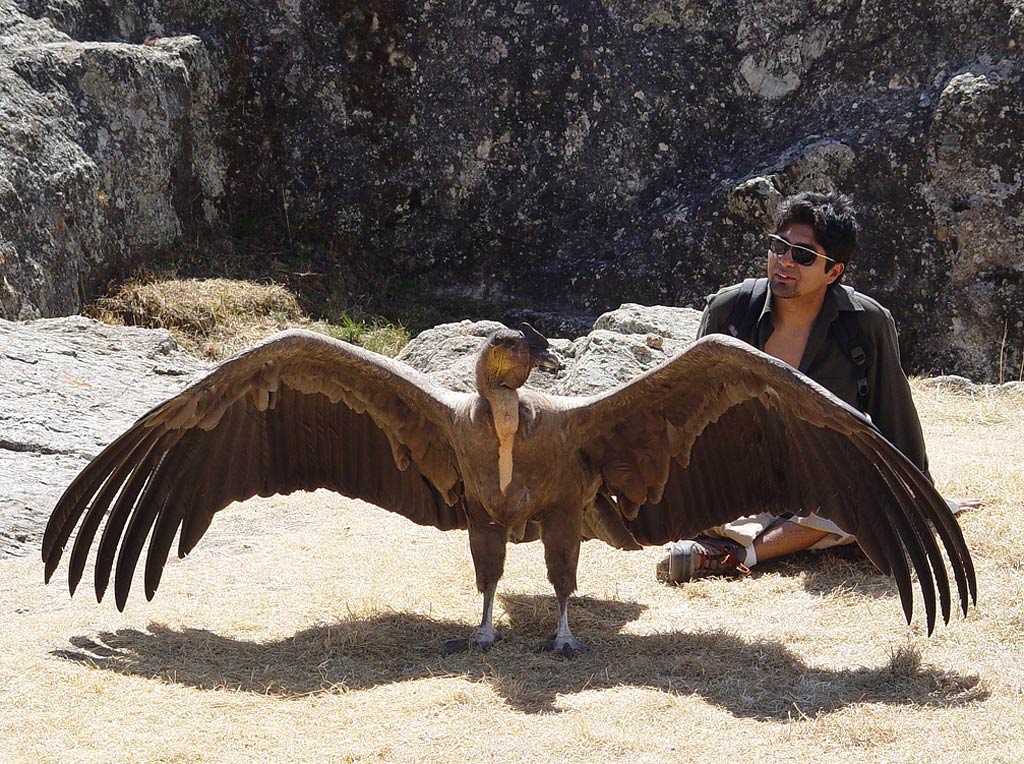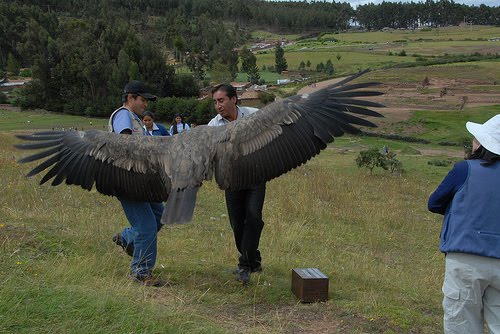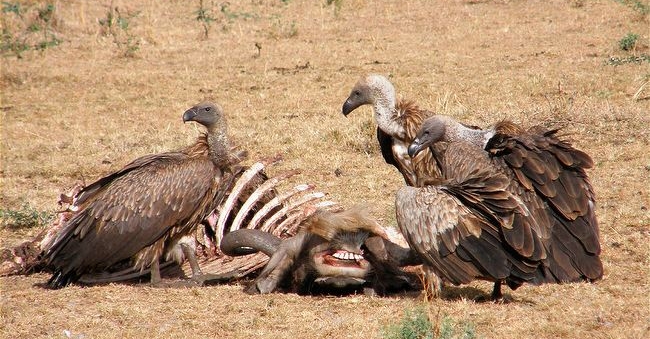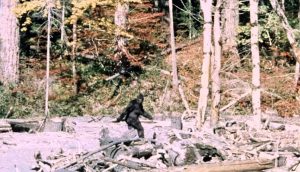Andean Condor: The Biggest Wings In The World
I know, I know, the wandering albatross normally gets the prize for the biggest wings, and that’s not really too far off the mark. The wandering albatross does have the biggest wingspan, measuring up to an amazing 3.5 m (11 ft 6 in). The Andean condor‘s wingspan is smaller – 3.2 m (10 ft 6 in) – but their wings are much, much broader meaning that their wings, overall are bigger.
These huge black New World vultures are also in the top three heaviest flying birds, alongside the dalmatian pelican and the trumpeter swan. As with most vultures, their head and neck are nearly bald, this is to prevent their feathers getting matted with blood as they ram their head deep into fresh (or nearly fresh) carcasses. The Andean condor’s bald bits change colour with mood, for instance when performing courtship rituals it turns from a dull red to a snazzy yellow colour and is inflated with air.
The Andean condor (Vultur gryphus), as with most vultures, is a scavenger. They live on inaccessible craggy cliff ledges, normally around 500 m up. They’re also one of the longest lived birds, managing to survive for more than 70 years in some cases.The Andean condor is a national symbol of Argentina, Bolivia, Chile, Colombia, Ecuador, and Peru and plays an important role in the folklore and mythology of the Andean regions…
The Andean condor is considered a symbol of power and health and examples of the bird in Andean art can be traced back for more than 4,000 years. In Peruvian bull fighting an Andean condor is strapped to the back of a bull so it can peck at the animal whilst the human bullfighter attacks the front end. That’s pretty nuts isn’t it? The bird normally survives and is set free. The bull isn’t usually quite as lucky…
These condors are considered near threatened, mostly due to secondary poisoning from eating carcasses that have been poisoned by hunters, rather than the odd sport featured above. Sadly many of these graceful birds are killed by local farmers who wrongly fear that they will steal their animals. There are programmes in place to educate local farmers that the Andean condors aren’t a threat to their livestock. The birds only eat things that have already died. You can understand why a farmer might imagine a bird of that size had killed his animals rather than found them dead and then gone in for a snack.
Surprisingly, Old World and New World vultures, despite their obvious similarities, seem to have evolved separately. Some authorities suggest that New World vultures, like the Andean condor, are actually more closely related to the stork than they are to the Old World vultures.
Unlike most birds of prey, the Andean condor male is larger than the female. Normally it’s the female that is of a larger size in raptors and no one knows why this “reverse sexual dimorphism” occurs. One piece of evidence as to why the male birds of prey might be smaller than their female counterparts is the size of their chosen quarry. Birds who chase more agile prey tend to have larger size differences between genders. Whereas in species where their chosen meals are slower – like the vultures – the difference between gender sizes is less marked. So it’s possible that a smaller male will make a better hunter whilst the female looks after and protects the brood.
Another theory poses that females, over time, have selected smaller males because they are less threatening to themselves and their chicks. A third theory says that the size difference helps cut down on competition between male and female, each can effectively go after different prey species. Any way, as interesting as that is it’s nothing to do with the Andean condor because, like I said, the males are the larger in this instance.
Like most other vultures, the Andean condor is a soarer, it’s not a flapper. It uses thermals to drift effortlessly along in its pursuit of corpses. Darwin once noted that he’d watched one of these birds soaring through the skies for half an hour and not seen it flap once.
Andean condors are always on the look out for bodies. They’ll eat anything they find, the bigger the better of course. In modern times, domestic animals like horse, cattle, sheep and goats have become a meal of choice, simply because they are now more prevalent than their original fare of wild armadillos, lamas, alpacas, etc. Coastal individuals search for washed up cetaceans, which can give them a hearty meal, and then some. These condors do occasionally catch and kill prey items, but they aren’t really adapted for it so mostly rely on the already deceased for dinner.
The Andean condor has a pretty odd habit called urohidrosis. This strange behaviour is where the birds excrete all over their own legs and feet. No one is exactly sure why. In some creatures this behaviour has been explained as having a cooling effect for the animal, in a similar way to mammalian sweating. But high up on this condor’s perch it certainly has no need for additional cooling. This rather bizarre urohidrosis means that they often sport streaky, ammonia covered legs.
So, despite the fact that they religiously soil themselves for no apparent reason, I think we can agree that these mystical beasts are quite impressive all round.

